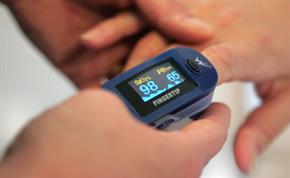
Croup is a respiratory condition that most commonly affects children between six months and six years old.
It’s very common, often comes on gradually and is characterised by stridor and a distinctive ‘barking’ cough.
Croup itself is caused by a virus, and is often seen at this time of year because of the general spread of viral infections like parainfluenza. It causes the subglottic area of the larynx to become inflammed, and therefore narrows the airway.
It’s a self-limiting disease and symptoms usually resolve with 48-hours. Typically, symptoms become worse during the evening and at night.
Assessment
The Modified Taussig Score is a simple assessment tool that can be used to assess its severity and whether any medication is needed.
|
|
|
Score |
|
Stridor |
None Only on crying, exertion At rest Severe (biphasic) |
0 1 2 3 |
|
Recession |
None Only on crying, exertion At rest Severe (biphasic) |
0 1 2 3 |
Score of 1-2 = mild
Score of 3-4 = moderate
Score of 5-6 = severe
Hypoxia (O2, saturations <95% on air), cyanosis, physical exhaustion, restlessness, irritability and altered consciousness are all ominous signs.
Management
Supportive/reassuring care is important as it can be frightening for both the child and their parents - agitation is known to make the symptoms worse.
Mist/steam has often been recommended in the past, but there is little evidence that it is of any benefit.
Antipyretics can be used to reduce fever (if present) and make the child more comfortable, but they will have no effect on the croup itself.
Corticosteroids are now preferred for the treatment for croup. It is recommended that children with a diagnosis of croup, regardless of the severity, receive a single dose of oral dexamethasone. This can be administered by an ECP or in a hospital environment.
Oxygen can be used in more serious cases if the patient is becoming hypoxaemic, remembering that paediatrics may decompensate very quickly. As well as the above, hospital treatment may also include nebulised adrenaline or budesonide.
Hospital admission
The majority of children with mild croup can be treated at home quite successfully, however consideration to admit to hospital should occur in children with a history of severe obstruction, previous severe croup, known structural upper airways abnormalities, less than six months of age, who are immunocompromised, who have inadequate fluid intake/refusing liquids, who have had a poor response to initial treatment or who have an uncertain diagnosis. Those with a moderate or severe score should be taken into hospital.
Staff should also be aware that the Clinical Practice Guidelines (formally JRCALC) suggest all children with stridor should be transferred to further care for assessment and observation – even if clinical improvements are noted at home.
Published 11th January 2015